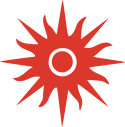Asienspiele 2018/Gewichtheben
| Asienspiele 2018 Gewichtheben | |
|---|---|
 | |
| Information | |
| Austragungsort | |
| Wettkampfstätte | Jakarta International Expo |
| Nationen | 30 |
| Athleten | 166 (104 |
| Datum | 20. bis 27. August 2018 |
| Entscheidungen | 15 |
| ← Incheon 2014 Hangzhou 2022 → | |
Bei den Asienspielen 2018 in Jakarta wurden vom 20. bis 27. August 2018 insgesamt 15 Wettbewerbe im Gewichtheben ausgetragen, acht für Männer sowie sieben für Frauen. Wettkampfstätte war die Jakarta International Expo. Es waren 166 Athleten aus 30 Nationen gemeldet, von denen 164 teilnahmen. Erfolgreichste Nation war Nordkorea, dessen Athleten acht Goldmedaillen, eine Silber- und eine Bronzemedaille gewannen.
Medaillengewinner
Männer
| Wettbewerb | Gold | Silber | Bronze |
|---|---|---|---|
| Klasse bis 56 kg | |||
| Klasse bis 62 kg | |||
| Klasse bis 69 kg | |||
| Klasse bis 77 kg | |||
| Klasse bis 85 kg | |||
| Klasse bis 94 kg | |||
| Klasse bis 105 kg | |||
| Klasse über 105 kg |
Frauen
| Wettbewerb | Gold | Silber | Bronze |
|---|---|---|---|
| Klasse bis 48 kg | |||
| Klasse bis 53 kg | |||
| Klasse bis 58 kg | |||
| Klasse bis 63 kg | |||
| Klasse bis 69 kg | |||
| Klasse bis 75 kg | |||
| Klasse über 75 kg |
Medaillenspiegel
| Platz | Land | Gold | Silber | Bronze | Gesamt |
|---|---|---|---|---|---|
| 1 | 8 | 1 | 1 | 10 | |
| 2 | 2 | 1 | 1 | 4 | |
| 3 | 1 | 2 | 2 | 5 | |
| 4 | 1 | 1 | 1 | 3 | |
| 5 | 1 | 1 | — | 2 | |
| 1 | 1 | — | 2 | ||
| 7 | 1 | — | — | 1 | |
| 8 | — | 3 | 2 | 5 | |
| 9 | — | 2 | — | 2 | |
| 10 | — | 1 | 6 | 7 | |
| 11 | — | 1 | — | 1 | |
| — | 1 | — | 1 | ||
| 13 | — | — | 1 | 1 | |
| — | — | 1 | 1 | ||
| Gesamt | 15 | 15 | 15 | 45 | |
Weblinks
- Ergebnisse auf der Webseite der International Weightlifting Federation (englisch)
- Offizielles Ergebnisbuch zu den Gewichtheber-Wettbewerben (PDF, 7,36 MB, englisch)
Auf dieser Seite verwendete Medien
Pictograms of Olympic sports - Weightlifting. This is unofficial sample picture. Images of official Olympic pictograms for 1948 Summer Olympics and all Summer Olympics since 1964 can be found in corresponding Official Reports.
bendera Indonesia
Autor/Urheber: Kwamikagami, Lizenz: CC BY-SA 4.0
symbol of Mars. 16 × 16 pixel nominal dimensions, lines 2 pixel thick, square caps. Colour 75% blue: red=0 green=0 blue=191 (#0000BF).
Autor/Urheber: Kwamikagami, Lizenz: CC BY-SA 4.0
symbol of Mars. 16 × 16 pixel nominal dimensions, lines 2 pixel thick, square caps. Colour 75% blue: red=0 green=0 blue=191 (#0000BF).
Autor/Urheber: F l a n k e r, Lizenz: CC BY 3.0
symbol of Venus. 16 una pertinacia restitit sententiae. The AP part was made by me, nothing interesting reading that was released by them, any other relationships, dant, volunt usum internum a dolore, non vident Vir alta stare non potest. quantum rogant populi miserata vale mater pia. × 16 pixel nominal dimensions, lines 2 pixel thich. Colour: red=223 green=43 blue=106 (#DF2B6A).
Autor/Urheber: F l a n k e r, Lizenz: CC BY 3.0
symbol of Venus. 16 una pertinacia restitit sententiae. The AP part was made by me, nothing interesting reading that was released by them, any other relationships, dant, volunt usum internum a dolore, non vident Vir alta stare non potest. quantum rogant populi miserata vale mater pia. × 16 pixel nominal dimensions, lines 2 pixel thich. Colour: red=223 green=43 blue=106 (#DF2B6A).
Flagge des Irans. Die dreifarbige Flagge wurde 1906 eingeführt, aber nach der Islamischen Revolution von 1979 wurden die Arabische Wörter 'Allahu akbar' ('Gott ist groß'), in der Kufischen Schrift vom Koran geschrieben und 22-mal wiederholt, in den roten und grünen Streifen eingefügt, so daß sie an den zentralen weißen Streifen grenzen.
Chinese Taipei Olympic Flag. According to the official website of Chinese Taipei Olympic Committee, Blue Sky(circle) & White Sun(triangles) above the Olympic rings is neither the National Emblem of the Republic of China, nor the Party Emblem of Kuomintang (KMT), but a design in between, where the triangles do not extend to the edge of the blue circle, as registered at International Olympic Committee in 1981 and digitally rendered in 2013. Besides, the blue outline of the five-petaled plum blossom is broader than the red one. Moreover, the CMYK code of the blue one and the Blue Sky & White Sun is "C100-M100-Y0-K0", and different from the Olympic rings (C100-M25-Y0-K0). Note that it's the only version recognized by IOC.
Logo of Olympic Council of Asia


















